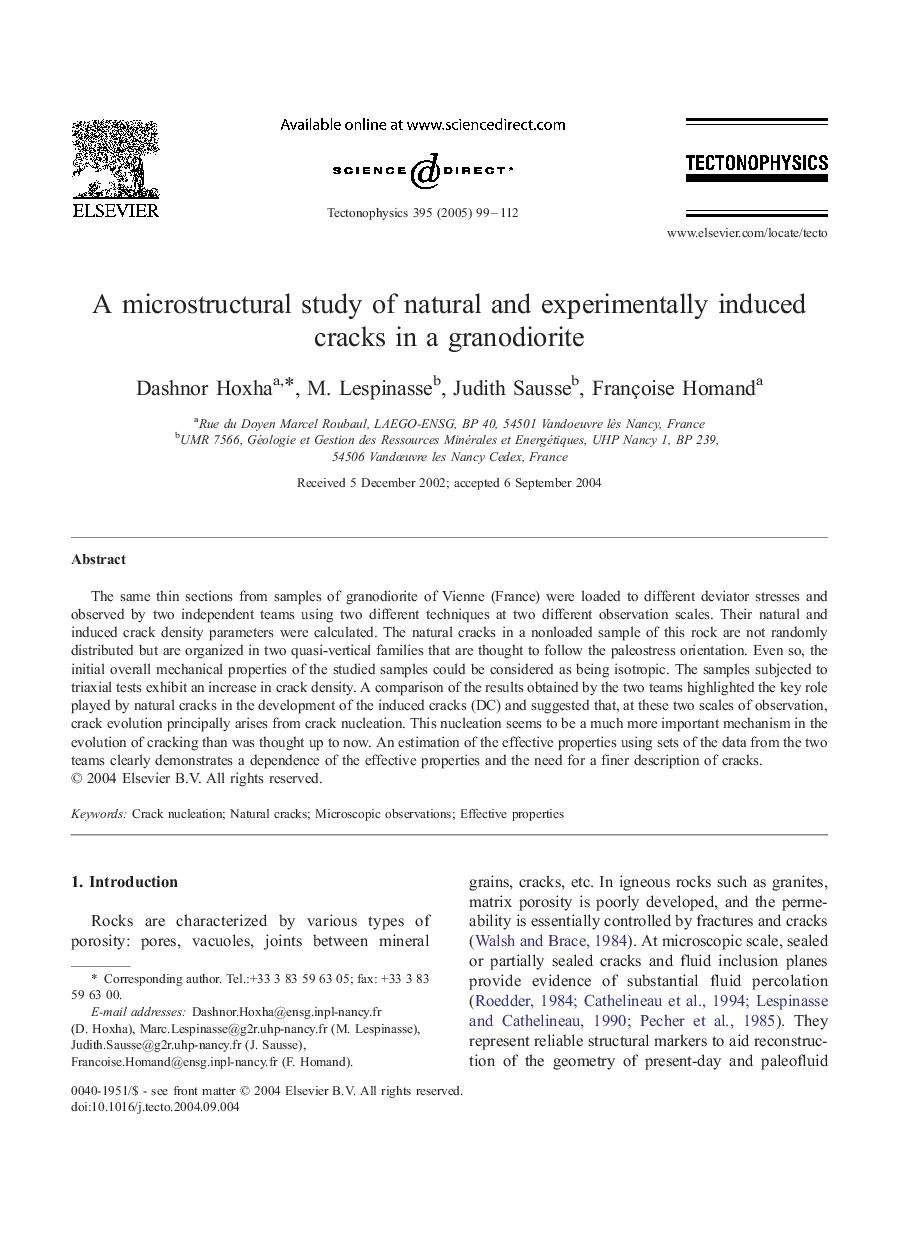| Article ID | Journal | Published Year | Pages | File Type |
|---|---|---|---|---|
| 9527178 | Tectonophysics | 2005 | 14 Pages |
Abstract
The same thin sections from samples of granodiorite of Vienne (France) were loaded to different deviator stresses and observed by two independent teams using two different techniques at two different observation scales. Their natural and induced crack density parameters were calculated. The natural cracks in a nonloaded sample of this rock are not randomly distributed but are organized in two quasi-vertical families that are thought to follow the paleostress orientation. Even so, the initial overall mechanical properties of the studied samples could be considered as being isotropic. The samples subjected to triaxial tests exhibit an increase in crack density. A comparison of the results obtained by the two teams highlighted the key role played by natural cracks in the development of the induced cracks (DC) and suggested that, at these two scales of observation, crack evolution principally arises from crack nucleation. This nucleation seems to be a much more important mechanism in the evolution of cracking than was thought up to now. An estimation of the effective properties using sets of the data from the two teams clearly demonstrates a dependence of the effective properties and the need for a finer description of cracks.
Related Topics
Physical Sciences and Engineering
Earth and Planetary Sciences
Earth-Surface Processes
Authors
Dashnor Hoxha, M. Lespinasse, Judith Sausse, Françoise Homand,
